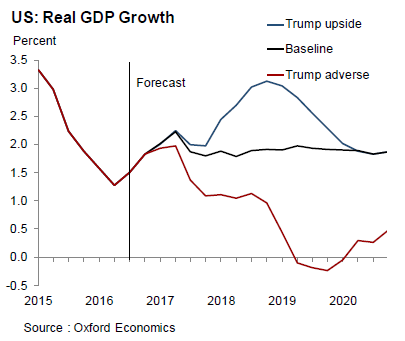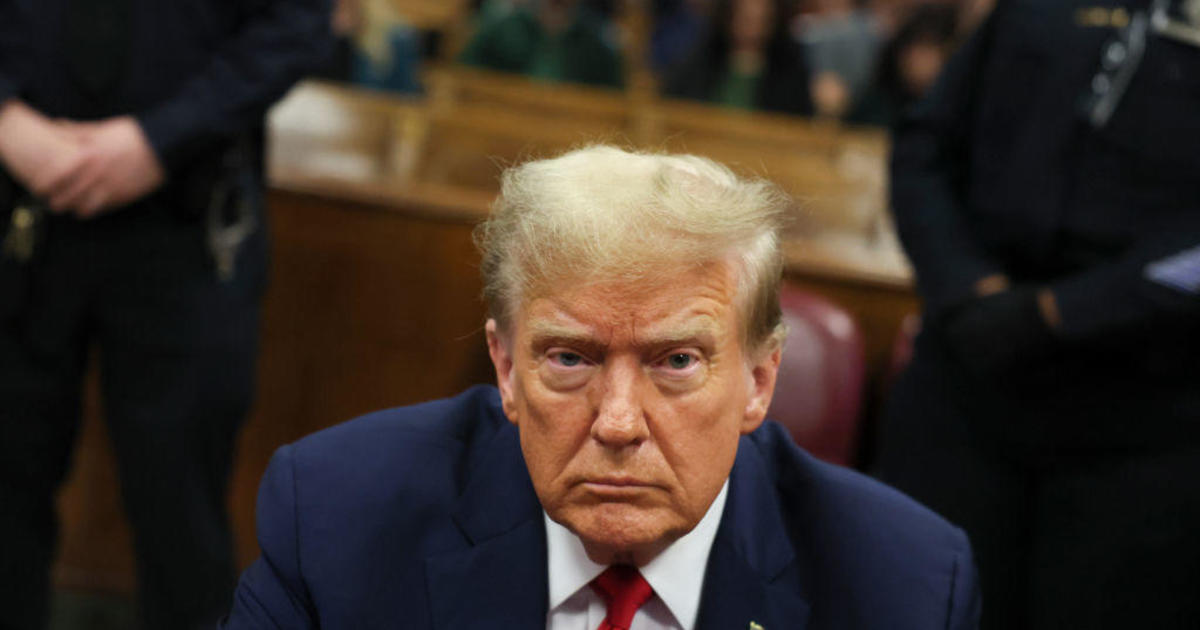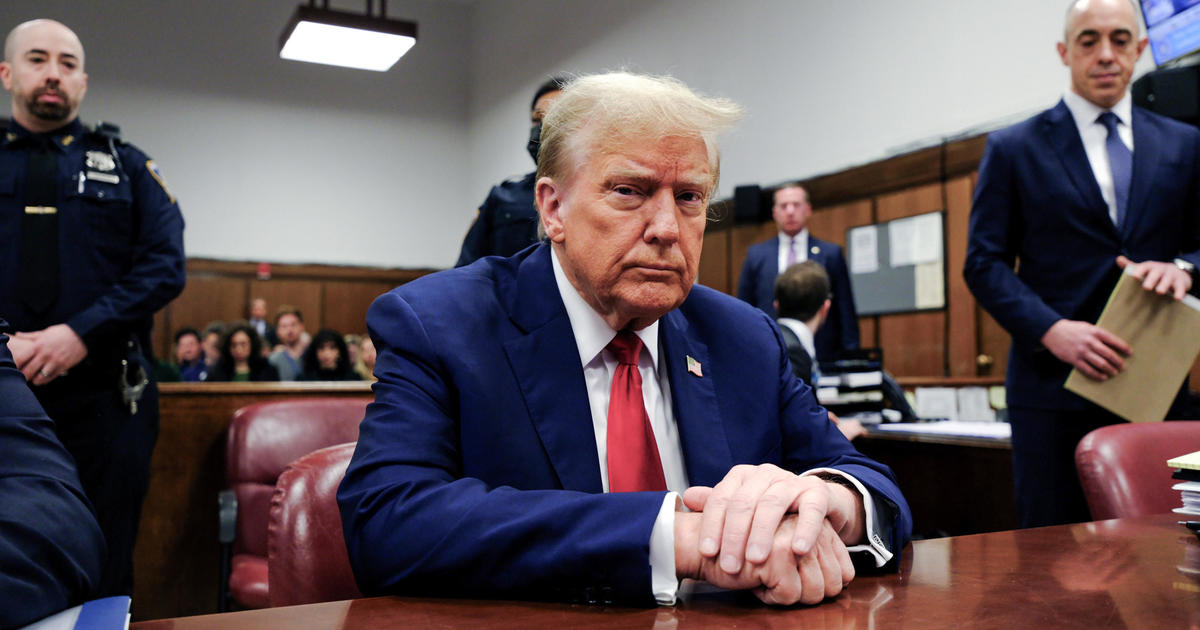3 visions for Trump's economy
In the week since the greatest political upset in modern history -- the election of Donald Trump as America’s 45th president -- Wall Street has been ebullient.
The Dow Jones industrials index notched yet another a new record closing high on Monday, fueled by a surge in financial and “hard economy” stocks. Yet as raw emotion gives way to reason and reflection, many investors are realizing that Trump’s economic policies may not all be benign, and the downside costs and risks for stocks may not adequately accounted for.
Indeed, weakness in other markets such as Treasury bonds and emerging market currencies belies this dynamic.
In broad strokes, this chart shows three possible economic futures:
It was put together by Gregory Daco at Oxford Economics, who wonders whether all the post-election enthusiasm over the prospect of lower taxes, higher spending and reduced regulation has blinded investors to the threats of “increased policy uncertainty, more trade protectionism, congressional fiscal orthodoxy and stricter immigration” -- all of which could frustrate Trump’s plans.
Indeed, worries over import tariffs and a reduction in the skilled H1B visas Silicon Valley relies on to keep labor costs low have hit tech stocks hard over the past week -- widening the performance gap between the Dow industrials and the tech-heavy Nasdaq Composite index to a level not seen since the financial crisis. Apple (AAPL), the single most important stock in terms of market capitalization, has fallen more than 10 percent from its late October high.
The wide variety of possible outcomes Daco modeled could result in anything from a new recession in 2019 to a return to a 3 percent-plus GDP growth rate.
His baseline, or middling, outlook assumes a compromise between President Trump and Congress that results in a modest fiscal stimulus and targeted trade protectionism. Private industry would get a lift from lower taxes and increased spending on roads, bridges and schools. That would be offset by a tightening of trade terms and potential retaliation from trading partners.
The result is GDP growth of just 2 percent in 2017 and 1.8 percent in 2018, with a single rate hike from the Federal Reserve in 2016 and again in 2017.
The upside scenario sees GDP growth roughly double from its current underlying pace. It assumes tax cuts are twice as large as in the baseline forecast (worth $1 trillion over the next decade), focusing on low-income families, who have a greater propensity to spend their savings, and greater spending on infrastructure. To placate the budget hawks in Congress, Trump would swap easier trade terms for a larger debt ceiling.
The result is a U.S. economy that’s 2 percent larger by 2020 and has 2 million more jobs.
The downside scenario would see the relationship between the Trump faction and establishment Republicans in Congress break down over his tendencies toward aggressive nationalism. This would come to a head during debt-ceiling negotiations, which will happen as soon as March.
Congress could balk at projections from the Committee for a Responsible Federal Budget that Trump’s current proposals would result in a doubling of the national debt save for drastic nonentitlement budget cuts and much faster-than-anticipated economic growth.
Under this scenario, a new recession would hit within the next two years and result in an economy 5 percent smaller, employing 4 million fewer Americans by the end of Trump’s term.
A similar “what if” analysis by Goldman Sachs (GS) found that the potential economic outcomes under Trump range from an upside of GDP growth accelerating to a 2.6 percent rate by 2018 to a downside “stagflation” forecast of a sub-1 percent stall in 2019 along with rising inflation and joblessness.





